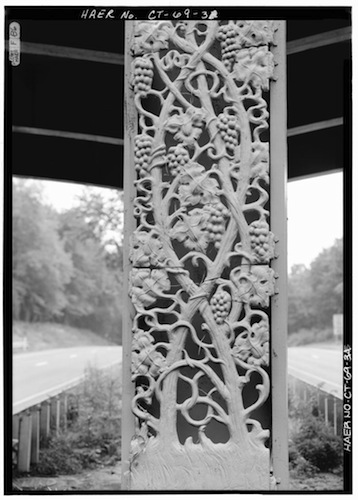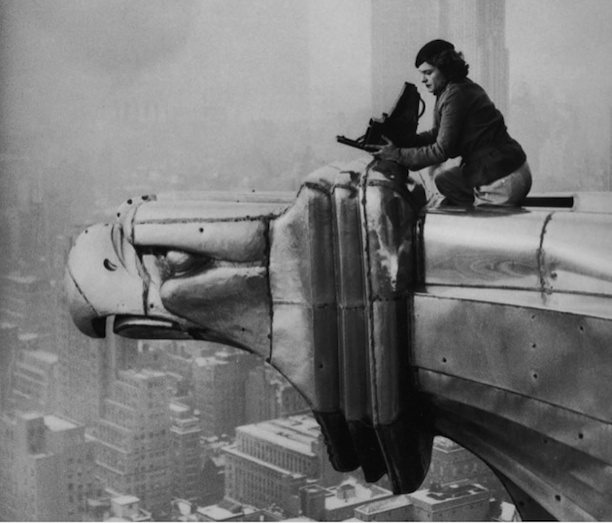By Gregg Mangan
Kenneth Lynch was an accomplished blacksmith who was a longtime resident of Wilton and created some of the most memorable pieces of metalwork found in the Northeast. Part of a family with a 300-year tradition of metalworking, in addition to performing repairs on the Statue of Liberty and the weathervane at Boston’s Old North Church, Lynch produced such famous works as the iron gates at St. Patrick’s Cathedral, the Art Deco steel doors of the Chrysler Building, and the giant rings held aloft by Atlas at Rockefeller Center.
A native of New Haven, Connecticut, Lynch took to metalworking at an early age, heating a piece of pipe in the family furnace to make ice tongs at the age of nine. In 1917, at the age of 11, he apprenticed himself to a blacksmith, and then shortly after, went to work at the International Silver Company in Meriden.

Detail of iron work produced by Kenneth Lynch for the center pier of the Lake Avenue Bridge, spanning the Merritt Parkway, Greenwich – Library of Congress, Prints and Photographs Division
In his late teens he joined the army and traveled to Germany and France. There he shoed horses for the cavalry and learned the ancient art of armory.
After finishing out his service, Lynch opened his own metalworking shop in Manhattan and then moved to Long Island City, before, in 1938, relocating to Wilton, Connecticut. Having recently completed renovations on the Statue of Liberty, Lynch further enhanced his reputation by fabricating pieces for display at the 1939 World’s Fair in New York.
Turning Metalworking into Commercial Success
Lynch released his first mail order catalog in 1950 and the demand for his services exploded. The US Air Force came to him during the Korean War to ask for a lead ball capable of covering radioactive isotopes used in testing Geiger counters. In addition to his work for the air force, Lynch made shields for hospital x-ray rooms, bulletproof vests, a variety of armor-related props for movie sets, and even chain mail shirts to protect engineers of a Texas oil company from poison darts blown at them as they searched for oil in Venezuela.
By the middle of the 20th century, Kenneth Lynch and Sons occupied 31 buildings covering a span of 12 acres in Wilton, and by the end of the century, generated over $2 million a year in revenue. In recognition of his years of service and exemplary work, the staff at the Statue of Liberty hosted “Kenneth Lynch Day” in April of 1982.
As the ‘80s progressed, however, Lynch’s health began to decline. He eventually passed away at his home in Wilton in 1989 after a long illness. Ownership of the company passed to Kenneth’s son, Timothy, who, in 2007, relocated the company’s headquarters to a 36,000-square-foot space in Oxford, Connecticut.
Gregg Mangan is an author and historian who holds a PhD in public history from Arizona State University.









